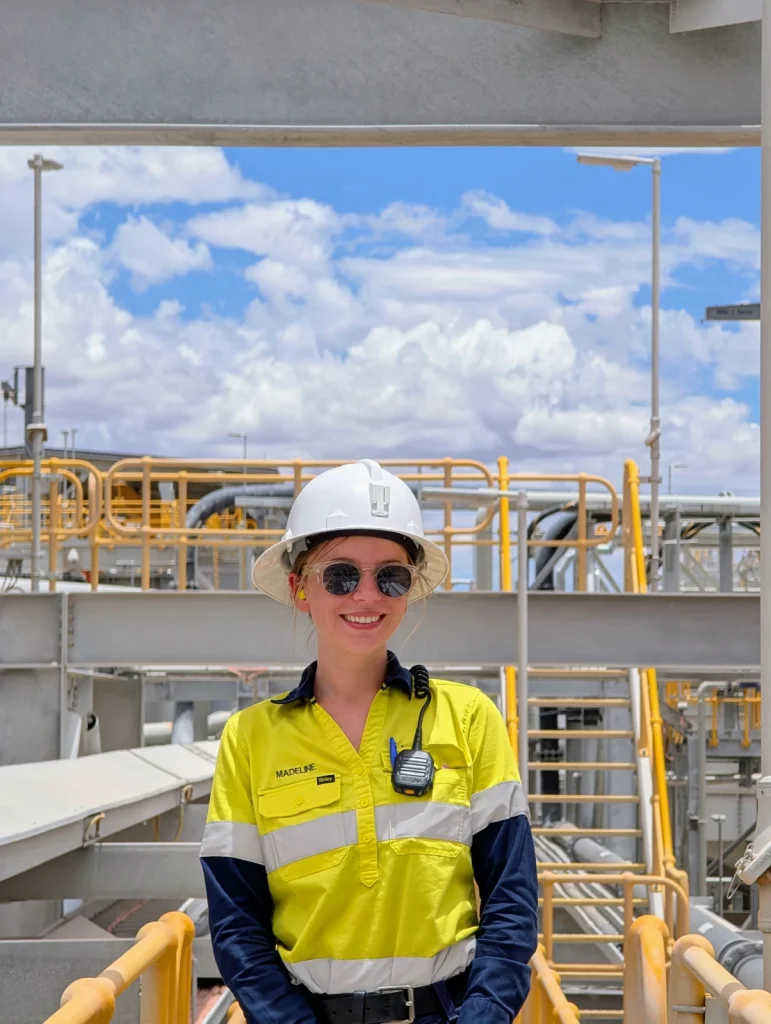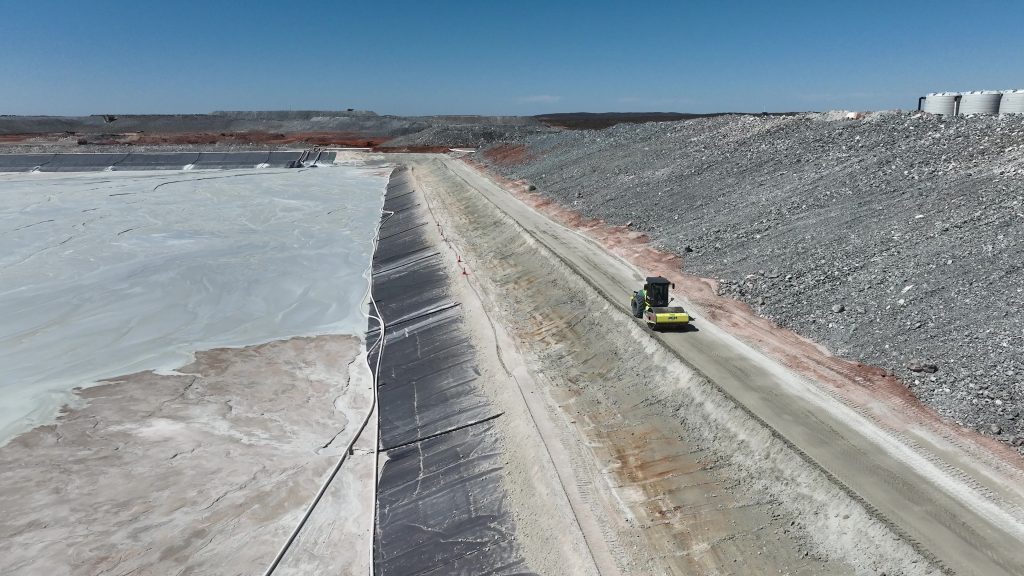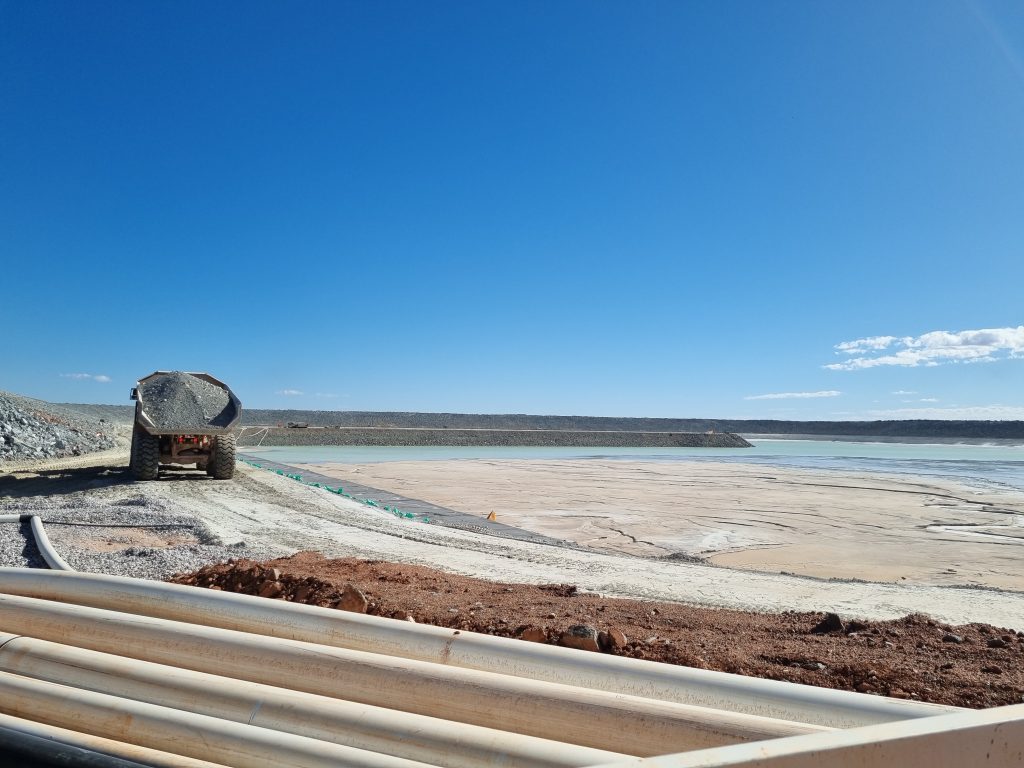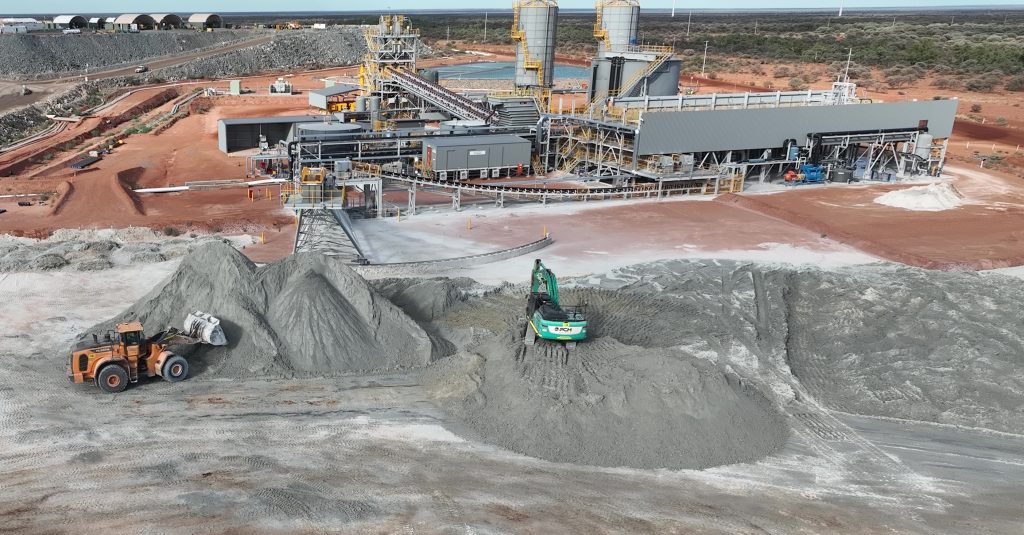TSF construction prioritises sustainability
05/03/2025The tailings storage facility (TSF) safely stores the leftover materials (tailings) from processing spodumene at Kathleen Valley. It helps to protect the environment by keeping waste contained, preventing pollution and allowing operations to continue safely and efficiently. At Kathleen Valley, we create dry stacked tailings from this material at the paste plant so that our tailings can be mixed with cement to create paste to reinforce the underground mine.
Senior Production Project Engineer Madeline Monkman has taken on the role of Liontown’s Responsible Tailings Facility Engineer of the TSF since arriving at Kathleen Valley six months ago. She explains, “I work with many work groups to ensure we safely operate and construct the TSF as per our design engineer’s requirements.”
With production at Kathleen Valley tracking strongly to plan, we’re constructing a raise on the dam to generate additional storage capacity. “This project is critical to continue processing – without tailings storage, we cannot operate the plant,” Madeline shared.
“The TSF embankments consist of several layers. The outer embankment is bulk mine waste that Iron Mine Contracting have placed straight from the pit to the final height of our dam. Our current TSF construction work is a 3m raise of the internal embankments on Cell 1, which includes placing a filter material (in our case a gravelly oxide material), and a fine-grained liner subgrade.”
Madeline, alongside our process operators and TSF team, has been instrumental in an initiative that will reduce our environmental impact, water consumption and costs associated with this project: “Following detailed test work, we found that the dry stack tailings have the right soil properties to be used as this ‘liner subgrade’ and that we can utilise a significant volume of our tailings material for construction,” she shared.
By using dry stacked tailings from the paste fill plant, we reduce the costs associated with screening to remove gravel from the rocky oxide material for that lining and reduce the water required to compact it – all while making use of the dry stacked tailings ahead of paste filling requirements.
“Through this initiative, we are repurposing a material which would otherwise be classified as waste as a construction material,” she added. “Not only are there sustainability benefits – we are also seeing financial benefits by removing the need to screen our oxide material and use less oxide material for each TSF raise, which is a limited resource onsite (unlike tailings). We’re also essentially increasing the tailings storage capacity required per tonne of lithium produced: more tailings to paste / dry stack means the smaller our TSFs need to be over the life of mine,” Madeline explained.
We are committed to implementing sustainable practices throughout all our operations, from extraction through to processing and distribution. Responsible resource development is critical to achieving our ESG goals and creating a more sustainable future.










